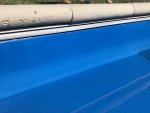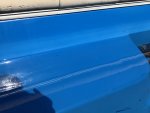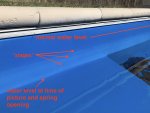I opened the pool this spring to see the dreaded chalkiness below the water line! (Nooooo!) I hadn’t noticed this before closing last season and there was 0 chlorine and a 7.4 ph at opening. I’m clueless as to what happened unless maybe I didn’t notice the chalkiness last season as it was under waterline. Am I looking at gel-coat damage or could it be that calcium built up over the winter? What did I do incorrectly and what should I do now?
Here’s a link to my Poolmath test records: PoolMath Logs
Here’s a link to my Poolmath test records: PoolMath Logs
Attachments
Last edited:




